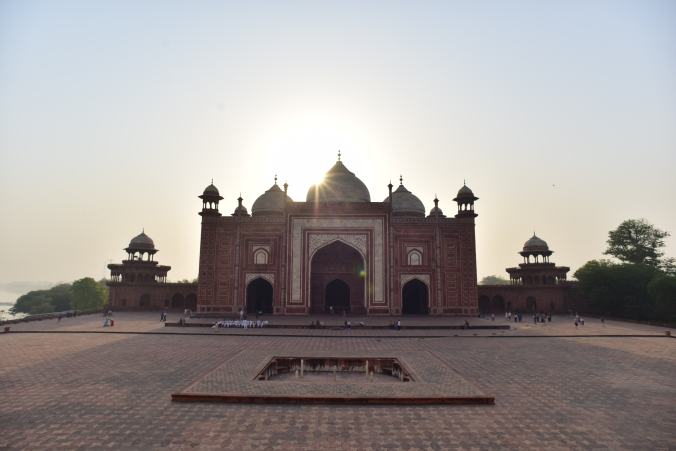A collection of some of our favorite photos from India; more to come.

It’s very easy for Western tourists in India to blend in. Really, it’s tough to even find me in this photo.
One aspect of traveling in India that really surprised us was how many people wanted their photo taken with us. We were regularly asked to pose for photos with couples, families and children – sometimes babies would be shoved into our arms for pictures! In some of the more rural areas, we were apparently the first Westerners they had seen.

Sorry about the scaffolding; they’re giving the marble a mud bath treatment to remove the evidence of intense pollution.

Traditional Muslim architecture at an imambara in Lucknow.

Stepwells, used in ye olde times and still today to hold water for people and agriculture.

It’s possible that this tractor’s trailer is ever-so-slightly overloaded.

Mumbai’s most expensive home, valued at $1 billion. It has 600 rooms, but it still has views of slums, like the one below.

One of Mumbai’s many slums.
While out on a day tour of Mumbai, we were offered the chance to visit one of its slum communities. Tours like this are challenging – many people will call them “poverty porn” – but poverty is an issue that confronts travelers everywhere in India. The Mumbai slum is truly one of the most remarkable places we’ve been; the people we saw were hard at work in a variety of industries, including textile manufacturing and recycling.

A “factory” in the slum.
Many of our Western luxury goods, such as branded handbags and clothing, are manufactured in places just like the one in the photo above. On the left, a roll of white fabric waits to be dyed; the red dye is bleeding out of the shop floor into the open sewer that runs along the buildings. The Dharavi slum, the second-largest in Asia, is thought to have a goods turnover of more than one billion dollars annually. While the ethics of visiting a place like this are debatable, there is no debate about the thriving economy that exists here.

Both Muslim and Hindu architecture feature prominently in India.

A statue of Lord Ganesha.

Every Sunday evening, the Mysore Palace is illuminated with millions of old-fashioned lightbulbs.

The red sandstone mosque next to the Taj Mahal.

The world’s largest open-air laundry in Mumbai. There is a good chance your fancy hotel’s sheets were washed here.

The Pink Palace of Jaipur.

Almost every cargo truck we saw was brightly painted and often festooned with streamers and other decorations.

At a cultural dance performance in Rajasthani, this amazing woman danced while balancing these pots on her head.

Kochi’s Chinese fishing nets.

People leave offerings of fruit and other foods at temples, and now most temples have excessive populations of (sometimes aggressive) rhesus macaques and gray langurs.
Outstanding post, love the first couple of abstract architectural compositions!
LikeLike
Thank you very much for your kind words, and thanks for reading the blog!
LikeLiked by 1 person
Maybe the “ear to ear smile”, and the only ball cap in the picture, a dead give away.
LikeLike
It is definitely the ballcap that does it…not the ghost-pale skin!
LikeLike